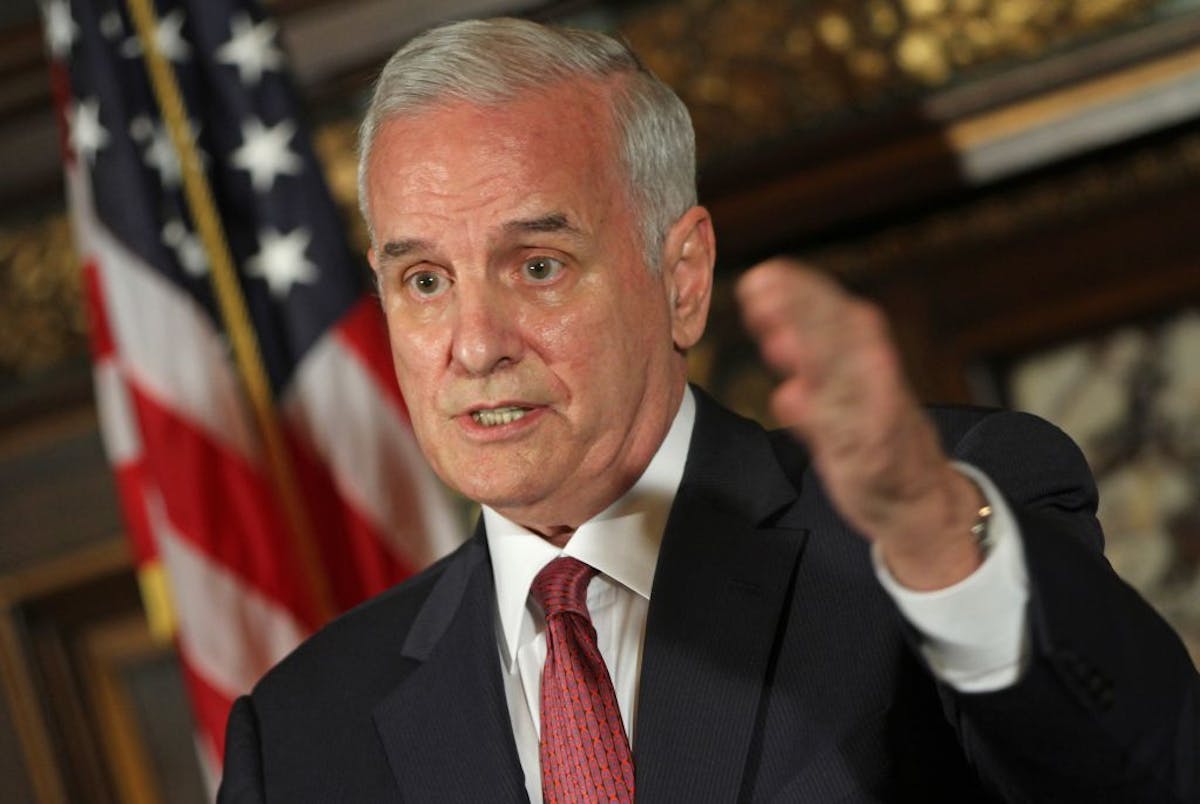I met Florida Gov. Rick Scott last Sunday. He sought me out to let me know that "I hope Gov. Dayton's menu of tax increases passes."
I was at a meeting with my business community peers from around the country. To say they are shaking their heads at what is going on in Minnesota is an understatement. To say they are gearing up for business recruitment campaigns aimed at our companies is accurate. We need to make sure they are not successful.
The good news is I know Gov. Dayton shares that sentiment. The bad news is his budget does not reflect it.
Yes, it's early in the legislative session, but Dayton's proposed budget sends anything but an invitation to Minnesota businesses to stay and grow here. The Florida governor's message -- and that from neighboring states, I might add -- is quite different.
Rest assured, we aren't surprised that Dayton wants to up-charge successful people and increase the number of former Minnesota taxpayers in Florida. He has been steadfast in his commitment to raise taxes on "the rich" and, by doing so, on many small- and medium-sized businesses.
What surprises the business community most is that Dayton proposed a budget with huge increases in both taxes and spending while recommending minimal reform in either. He is simply spending more money on the same things in the same way.
The governor's budget is not totally without merit. The Minnesota Chamber of Commerce supports his call to put a temporary freeze on business property taxes and level the playing field among Main Street stores and remote, online retailers. We endorse efforts to reform the sales tax system to reflect today's service economy, provided reform is based on sound tax policy.
But any positives are far outweighed by the negatives. His budget needlessly overreaches and increases the cost of doing business. Employers cannot accept higher costs without repercussions. They have choices: Pass along the costs to consumers, reduce expenses -- which may mean eliminating jobs or lowering wages and benefits -- or move operations out of state. The end result will be bad for Minnesotans.
Almost line by line, Dayton's budget falls short of his budget promises. The governor fails to advance a balanced approach to resolving the deficit. He raises spending by 7.6 percent, another $1 billion above the already $1.6 billion in projected spending growth. His recommended spending cuts -- just $167 million -- pale in comparison.
The governor fails to restore long-term stability to state finances. He was presented with solving a $1.1 billion projected deficit and responded by recommending more than $4.1 billion in gross tax increases. Most of this money goes to fund permanent spending. Expenses already outpace revenues. His budget makes that worse and cannot be sustained without more tax increases. He needed to redesign and restructure programs and services, and we don't see that in the budget.
The governor fails to improve the business climate. Minnesota's top rate in the personal income tax ranks eighth in the nation; he proposes to make us fourth. The change hits many of the 92 percent of Minnesota businesses that flow their business income through personal income taxes.
He also expands the sales tax on business-to-business services such as accounting and legal counsel. This puts Minnesota businesses at extreme competitive disadvantage, and it is one of the most regressive taxes. Dayton recommends reducing the corporate tax rate -- that's good -- but any benefits are lost by eliminating the incentives, many passed during the Perpich administration, for Minnesota companies to compete globally.
The governor's property tax relief fails to provide a foundation for reform. He proposes that every homeowner -- regardless of need or income -- will receive a $500 property tax rebate. In fact, his proposal returns to failed policies of the past that actually drove property taxes upward.
The governor fails to address some of the biggest cost-drivers, especially health and human services and public employee compensation and benefits.
I anticipate the knee-jerk reaction -- that this is just the selfish business community trying to protect its profits when the time is now to invest in higher education, early education and a host of other important needs. But Minnesota has a choice: We can tax our way into a less competitive position in the national and global economies. Or we can get serious about spending and tax reform in a manner that positions our state, its businesses, workers and families for economic stability and success.
The Minnesota Chamber is ready to work with the administration and lawmakers on spending reforms redesigning the way services are delivered. The good news is we are not alone. Six area foundations have presented some great spending reform ideas; so have a variety of health plans. A number of cities and counties have been working for years to change the way they deliver their services.
Now is the time for Minnesotans to join with us and share your ideas on how we can best leverage our hard-earned tax dollars. Once we have given spending reform and redesign our best shot, then let's consider how to address the state's tax structure. Not as a way to boost spending, but instead to keep Minnesota businesses competitive in the global economy.
-----------------------------------------
David C. Olson is president of the Minnesota Chamber of Commerce.
The 'Civility Caucus'

Sports betting push at Legislature resorts to punitive leverage


